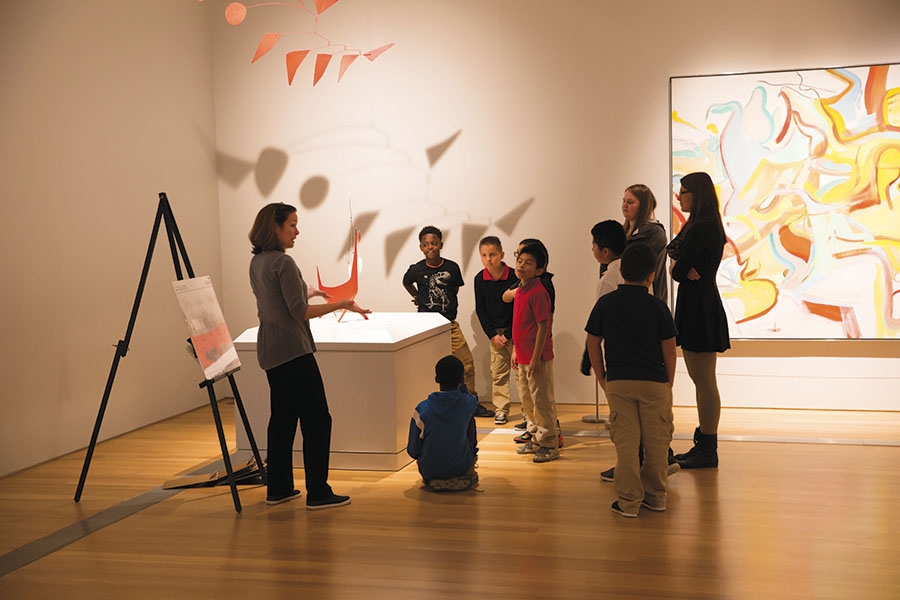An innovative program developed by Grand Rapids Art Museum positions the museum as an extension of the classroom.
With Language Artists, area third graders explore their creativity, artistic ability and writing skills. The program was first developed in partnership with Grand Rapids Public Schools to promote academic and cultural achievement. It not only improves students’ language arts and literacy skills, but also gives them ownership of the museum.
“We see that sense of civic pride from the students as they come through,” said Christopher Bruce, GRAM’s director of learning and creativity. “For most, it’s going to be the very first time they visit the museum.”
Now in its eighth year, the program’s success, growth and impact has garnered grant funding from the National Endowment for the Arts, this year earning a $20,000 Art Works grant.
“NEA is a very significant sort of tent-pole funder, but with or without NEA, the program will continue,” Bruce said. “It’s rather unusual for NEA to fund the same program multiple times.”
Language Artists is a year-long arts and literacy program that involves third-grade classes visiting the museum to learn about specific works in the permanent collection.
Bruce, who helped develop the program when he was an intern, said the museum staff continue to evaluate and modify the program every year to “make sure we are still engaging students in the best way possible.”
GRAM wanted to bring in students, but teachers initially said they couldn’t afford time away from the classroom.
“We of course came back and said, ‘Time at GRAM isn’t time away from the classroom, it’s time in a different classroom,’” Bruce said. “How can we create an experience that you’re excited about?”
Along with a 90-minute field trip to the art museum, GRAM provides teachers with activities they can do every day leading up to their visit, plus lesson plans for general education and art classes after the visit.
“The students who come through this program, they take ownership of the experience,” Bruce said. “They love the museum. They love the collection. They see themselves as artists, sometimes for the first time.”
Students create their own artwork and write a story about a character or creature in it, then write about work they see at the museum and compare the two. The lessons also allow the classroom teacher and art teacher to connect various themes and concepts together.
Everyone has noticed the results: more descriptive, detailed, creative writing.
“In terms of writing, not only did the writing improve, but the description of characters and setting and theme improved,” said Rick Noel, executive director of elementary schools, K8s and early childhood education at GRPS. “It provided an opportunity for what is happening in the art class to directly impact what is happening in the writing class.”
Each year in the spring, the program culminates with a student art exhibition and celebration at the GRAM. Representatives from the participating schools are selected to show their work and read their stories about it to their parents and program partners.
“There’s no greater ownership than when your work is on view,” Noel said. “It is just an amazing experience for students — quite frankly, it’s an amazing opportunity for some of our families.”
Language Artists has reached more than 12,000 students in 10 West Michigan school districts. During the 2016-2017 school year, nearly 1,900 students across 30 schools participated, a 6-percent increase over the previous year.
The program also engages many historically underserved schools and enhances access to a community institution, hopefully inspiring students to see themselves as artists, Noel said. More than 77 percent of participating students are from low-income households. Among participating students, 44 percent improved on writing prompts over the course of the program.
Noel, a former building principal, helped expand the program to all GRPS third-grade classrooms and coordinates aspects like registration and transportation.
“It really is not only a dynamic partnership, but a fun partnership,” Noel said. “What I am most excited about, from an equity perspective, is that our students are spending a large chunk of time in that facility and they begin to understand it’s there and it’s a wonderful community resource.”





